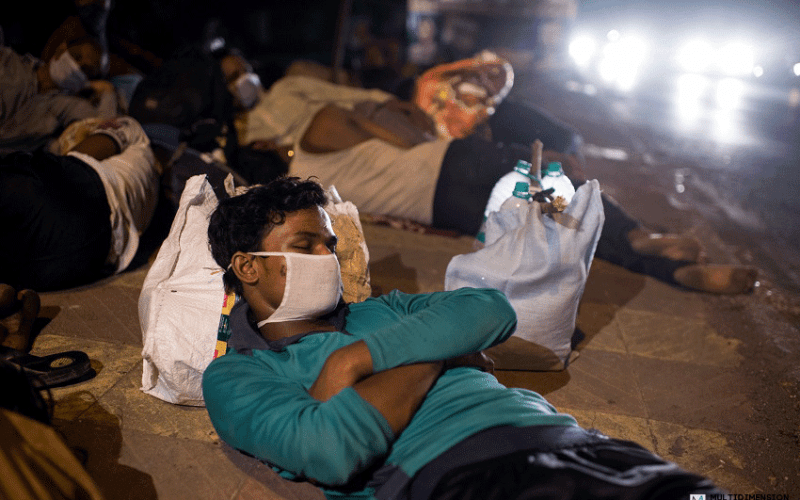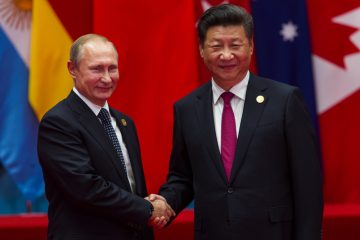Written by : Soumya Chattopadhyay, Srijan Das
Photo: Shutterstock.com
The problem migrant workers of India are facing today is not only due to COVID-19 pandemic. These actually are very deep rooted and long existing volatile problems which are just been exposed to civil society this time.
Let us start by understanding briefly ‘Migration’ in general. Globalisation, Urbanisation and the search for better livelihood has led to an increase of migrant labourers. In some regions of India, three out of four households include a migrant. About two out of Ten Indians are internal migrants. The impact of migration of labourers and their households, has a significant impact on the social, economic and political conditions of India. Studies on internal migration have indicated a decline in population mobility up to 1990’s. Conversely the post reform period confirms an increase in the internal population movement. The increase in the migration rate of labourers can be due to several factors that contrast themselves. Increasing unemployment conditions, lack of resources, environmental conditions, degradation of natural resources force the people to move. These push factors are in contrast with the pull factors like better employment opportunities, wages, good educational facilities, urbanization, better communication, commutation factors, life styles and economic factors. There are two important reasons for rural labour migration: (1) migration for survival and (2) migration for subsistence. The first indicates the severe social and economic hardships faced by rural laborers, a situation where migration becomes necessary to stay alive. The second reason for migration is also rooted in subsistence and arises because of the need to supplement income in order to fill the gaps of seasonal employment. Such communities often migrate for shorter periods and do not ordinarily travel very far from their homes.
But there is a fundamental difference between migration in developing country like ours with the developed ones. First of all, in our country labour has been informalized. An overwhelming 120 million people or more are estimated to migrate from rural areas to urban labour markets, industries and farms. And all of these workers constitute an unorganized labour force (94% work force of the whole country). Instead of such humongous numbers, they are marginalised and dominated culturally, economically and politically. When the labours migrate to a place, they generally become unfamiliar with the language, cultures and other social protocols of the new place which results in a social isolation. Proving their identity is another one of the core issues impoverished migrants face when they arrive in a new place, a problem that can persist for years or even decades after they migrate. The basic problem of establishing identity results in a loss of access to entitlements and social services. Lack of identification means migrants are not able to access provisions such as subsidized food, fuel, health services, or education that are meant for the economically vulnerable sections of the population. The hierarchy of labour is another major issue of the financial deprivation. The labours generally are not under the direct supervision of the contractor of the project or owner of the company. Rather he/she is under a middleman who have no control over providing wages and other social amenities to workers which implies no written contracts, no enforceable agreements regarding wages or other benefits, and no commitments regarding regular provision of work. Despite the economic imperatives that drive migration, migrant workers essentially remain an unbanked population. Since migrants do not possess permissible proofs of identity and residence, they fail to satisfy the Know Your Customer (KYC) norms as stipulated by the Indian banking regulations. They are thus unable to open bank accounts in cities. This has implications on the savings and remittance behaviours of migrant workers. In a state of continuous drift, migrant workers are deprived of many opportunities to exercise their political rights. Because migrants are not entitled to vote outside of their place of origin, some are simply unable to cast their votes. A 2011 study on the political inclusion of seasonal migrant workers found that 22 percent of seasonal migrant workers in India did not possess voter IDs or have their names in the voter list. Because of this, migrant workers are often left unable to make political demands for entitlements or seek reforms. All these lead to them towards an institutional unrecognition. The govt does not have any concrete data how many workers have migrated and from where to where.
Here comes the idea of social security which encapsulate the idea ‘each and everyone who has a role in creating wealth for states, should be protected by state in all aspects.’ To achieve this goal, The Indian Constitution contains basic provisions relating to the conditions of employment, non-discrimination, right to work etc. (e.g., Article 23(1), Article 39, Article 42, Article 43). India is also a member of the International Labour Organization (ILO) and has ratified many of the ILO conventions. These provisions and commitments, along with pressure from workers’ organisations, have found expression in labour laws and policies. But the market driven economy poses a major threat to all these. The main idea behind ‘Building and Other Construction Workers Act (1996)’ is that the state will collect cess from big companies and will give the social beneficiary to workers with that. But the taxation is heavily affected by the profit-loss calculation of the company which makes the workers’ salary uncertain. A serious constraint in framing an effective policy is the lack of credible data on incidence of seasonal migration. Census and National Sample Survey (NSS) that have a significant impact on policy making are unable to capture seasonal and circular migration. Migrants may also be missed out in Below Poverty Level (BPL) surveys. Without clear data, all governments be it state or central are totally fumbled and how to act in this situation is not at all clear to them.Another huge issue is the lack of manpower in government sectors. In general, when a scheme is announced for Regional Labour office or Block office executes that. But with so small number of officials it seems impossible to make those schemes come into effect.
So what government is doing now? They are going for temporary fixes. Community kitchens have been started, schools and colleges are turned into shelters. Government boasts of big numbers of migrant workers availing these facilities to prove measures are well-taken. But there are also lot of inherent flaws. First of all, quality of cooked food is too bad to survive on it for days after days. Secondly, there is a huge number of ‘invisible’ migrants who have not got any of these benefits and merely surviving under bridges, flyovers or just keep walking towards home. So now at this third stage of the lockdown, the one and only demand of the stuck labours is a safe transportation to home. But the state has even started to play the evil game there. Few days ago, Tamilnadu (TN) government passed a provision saying that ‘regular residents’ of TN can’t avail the facility they are arranging for transportation of workers. Now how it will be decided that who is ‘regular’ and who is not when a migrant worker almost spend 8-10 months at the place where he/she works. After a meeting with Construction lobby bigshots, Karnataka government has cancelled the previously announced train for labours just 15 hours before the scheduled time of departure which left thousand stranded. Now what can be the reason of this clear gap in the plan? It is gradually becoming clear that again the interest of big companies is getting priority to state. After almost one and half month of lockdown, these companies have started running again and now they want labours to join work instead of going home which put their lives at risk during this epidemic.In addition, local administrations, private companies are too much insensitive towards the hardship of migrant labours which results in anger turned protests. Instead of listening to their demands, police are charging lathis and shooting tear gas towards them. In some places, administration wants a medical clearance from labours to allow him to leave the state which gives rise to a fraud business of making duplicate of medical certificates. In brief, there is no smoothness at all in the process and the future of migrant labours seems bleak.
Former secretary-general of United Nations Ban Ki -Moon once said“Migration is an expression of the human aspiration for dignity, safety and a better future. It is part of the social fabric, part of our very make-up as a human family.” Way to go for our country to achieve that.
About the authors:
Soumya Chattopadhyay – Research Scholar, Indian Statistical Institute, Kolkata
Srijan Das – Student, Indian Statistical Institute, Kolkata
(The views expressed in this article are the author’s own and do not necessarily reflect Multidimension’s editorial stance.)




